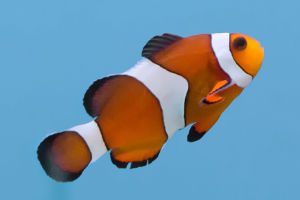Budding is a type of asexual reproduction in which a new organism develops from an outgrowth or bud due to cell division at one particular site. For example, the small bulb-like projection coming out from the yeast cell is known as a bud.
Budding is an asexual mode of producing new organisms. In this process, a new organism is developed from a small part of the parent’s body. A bud which is formed detaches to develop into a new organism. The newly developed organism remains attached as it grows further. It is separated from the parent organism when it gets matured by leaving scar tissues behind. As this is asexual reproduction, the newly developed organism is a replica of the parent and is genetically identical.
For reproduction, Hydra uses regenerative cells where a bud expands as an outgrowth because of repeated cell division at one specific location. These buds then developed into new small individuals which when completely matured, detach from the parent body.
For example- Both hydra and yeast reproduce by the process of Budding.
Hydra is exclusively a freshwater organism having different species. It is very small, just a half centimetre long. It is a cnidarian having a tubular body which is composed of a head, distal end and afoot at the end.
Budding in hydra involves a small bud which is developed from its parent hydra through the repeated mitotic division of its cells. The small bud then receives its nutrition from the parent hydra and grows healthy. Growth starts by developing small tentacles and the mouth. Finally, the small newly produced hydra gets separated from its parent hydra and becomes an independent organism.
Examples of Budding
Budding is a type of asexual reproduction, which is most commonly associated in both multicellular and unicellular organisms. Bacteria, yeast, corals, flatworms, Jellyfish and sea anemones are some animal species which reproduce through budding.
Budding in Yeast
Yeasts are non-green, eukaryotic, single-celled microorganisms belonging to the kingdom fungus. They are generally larger than the bacteria and they typically measure 3-4 µm in diameter. Yeast cells reproduce asexually by an asymmetric division process called budding.
In yeast, budding usually occurs during the abundant supply of nutrition. In this process of reproduction, a small bud arises as an outgrowth of the parent body. Later the nucleus of the parent yeast is separated into two parts and one of the nuclei shifts into the bud. The newly created bud divides and grows into a new cell.
Budding is a grafting technique in which a single bud from the desired scion is used rather than an entire scion containing many buds. Most budding is done just before or during the growing season. However some species may be budded during the winter while they are dormant.
Budding propagation produces true to type plants, unlike sexual propagation where plants could turn out to be like one or the other parent plant. It can generally be performed on any woody nursery tree, but it does require some skill, patience and sometimes plenty of practice
In horticulture the term budding refers to a method of plant propagation in which a bud of the plant to be propagated is grafted onto the stem of another plant.
Successful T budding requires that the scion material have fully-formed, mature, dormant buds, and that the root stock be in a condition of active growth such that the "bark is slipping". This means that the vascular cambium is actively growing, and the bark can be peeled easily from the stock piece with little damage.


